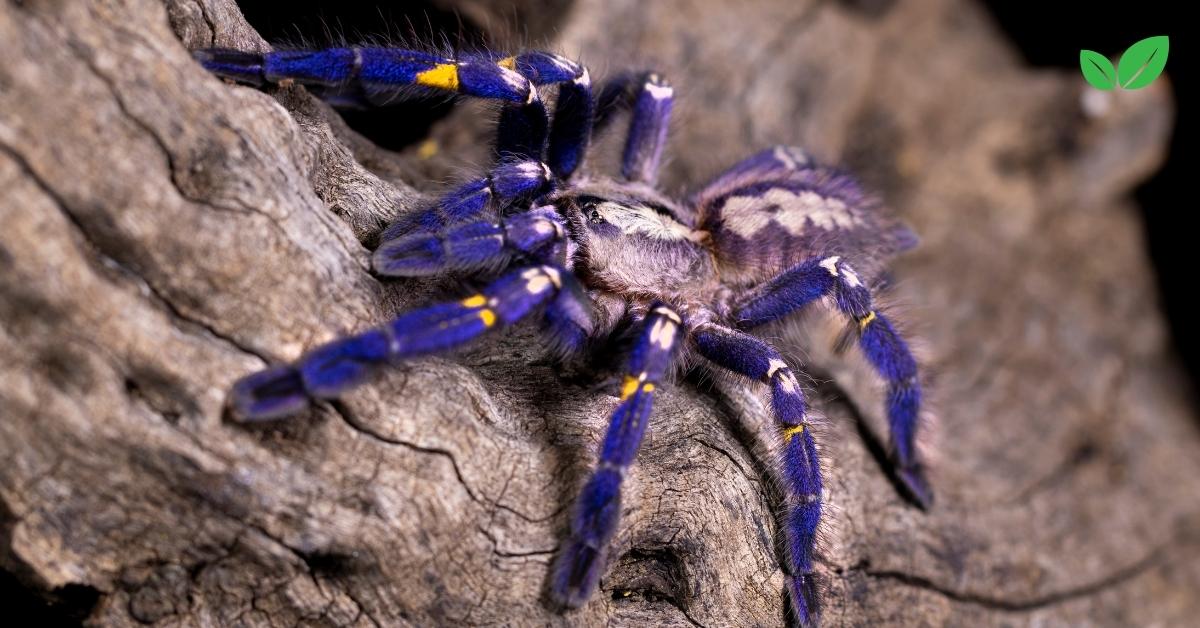Introduction
Poecilotheria metallica, commonly known as the Gooty Sapphire Ornamental Tarantula, is a strikingly beautiful yet rare species of tarantula native to the deciduous forests of Andhra Pradesh, India. Renowned for its metallic blue coloration, this species has become a focal point for arachnid enthusiasts and conservationists alike. Understanding the ecological niche of Poecilotheria metallica is crucial for appreciating its role in its native habitat and for developing strategies to protect it in the face of environmental challenges.
This article explores the environmental niche of Poecilotheria metallica, examining its habitat, behavior, diet, reproduction, and interactions within its ecosystem, as well as the conservation issues that threaten its survival.
Habitat and Distribution
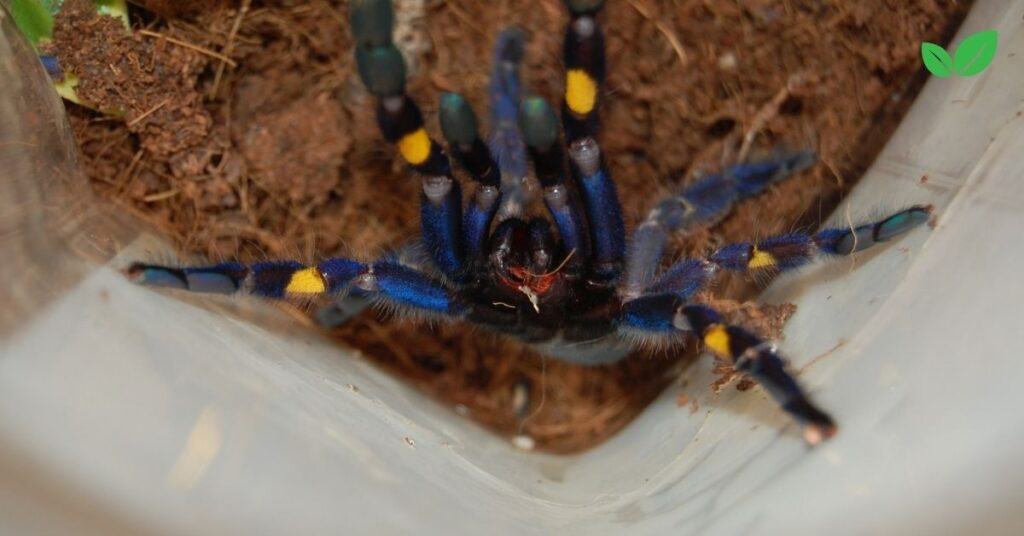
Native Range and Preferred Habitat
Poecilotheria metallica is endemic to a small region in the southeastern part of India, specifically within a forest area of Andhra Pradesh. These tarantulas are arboreal, meaning they primarily inhabit trees. They prefer old-growth deciduous forests with dense canopies that provide humidity and protection. The region’s tropical climate, with its distinct monsoon and dry seasons, supports a microhabitat ideal for P. metallica.
The natural habitat of Poecilotheria metallica is characterized by moderate to high humidity levels (ranging from 65% to 80%) and temperatures typically between 75°F to 85°F (24°C to 29°C). These conditions are essential for the tarantula’s survival, as they contribute to maintaining their physiological processes and overall health.
Habitat Specifics and Adaptability
Due to their arboreal nature, P. metallica can often be found in tree hollows or under loose bark, where they build silk retreats. These silk-lined shelters provide protection from predators and help maintain the moisture levels necessary for their survival. Despite their adaptability to different types of trees within their habitat, their dependence on forest cover makes them vulnerable to deforestation and habitat fragmentation.
Physical and Behavioral Adaptations
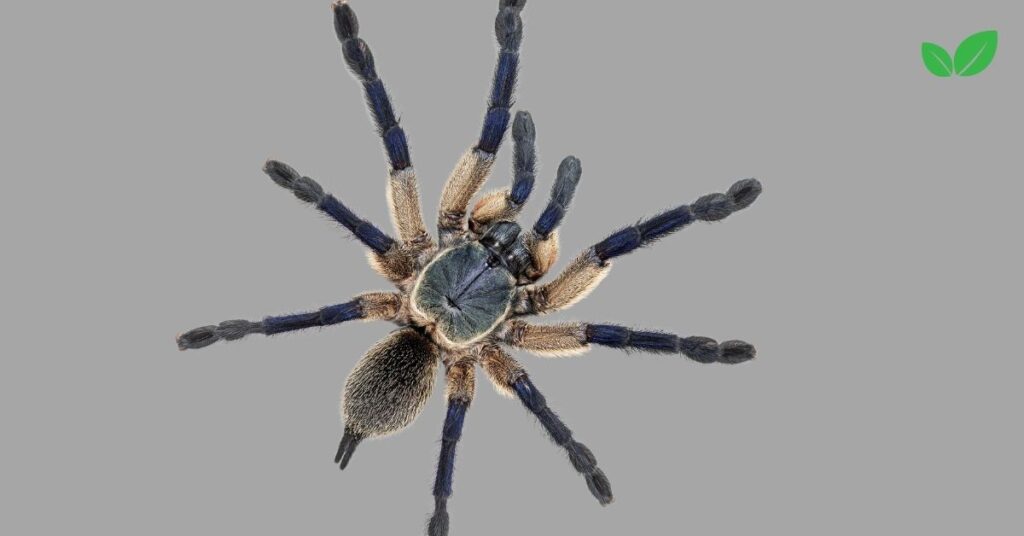
Morphological Adaptations
One of the most notable features of Poecilotheria metallica is its iridescent blue coloration, which is unique among tarantulas. This vivid color is not just an aesthetic marvel; it may serve as camouflage against predators by blending into the dappled light of the forest canopy. The tarantula’s body is covered in fine setae (hair-like structures) that help with sensory perception, allowing it to detect vibrations and nearby movements in its environment.
Additionally, like other tarantulas in the genus Poecilotheria, P. metallica has long, slender legs that allow it to move swiftly. This agility is essential for both capturing prey and avoiding potential threats. Their distinctive leg patterning—with contrasting white and black bands—may act as a warning signal to potential predators.
Behavioral Traits
Poecilotheria metallica is primarily nocturnal, spending most of its active hours hunting for prey under the cover of darkness. This behavior reduces the risk of predation and aligns with the availability of nocturnal insects. During the day, they remain hidden within their silk retreats to avoid desiccation and detection by predators.
These tarantulas are known for their quick and defensive responses when threatened. Unlike some other tarantula species that may rely on urticating hairs as a defense, P. metallica uses its speed and tendency to flee or, if necessary, deliver a venomous bite. Although the venom is not lethal to humans, it can cause significant discomfort, including pain and swelling.
Diet and Hunting Strategies
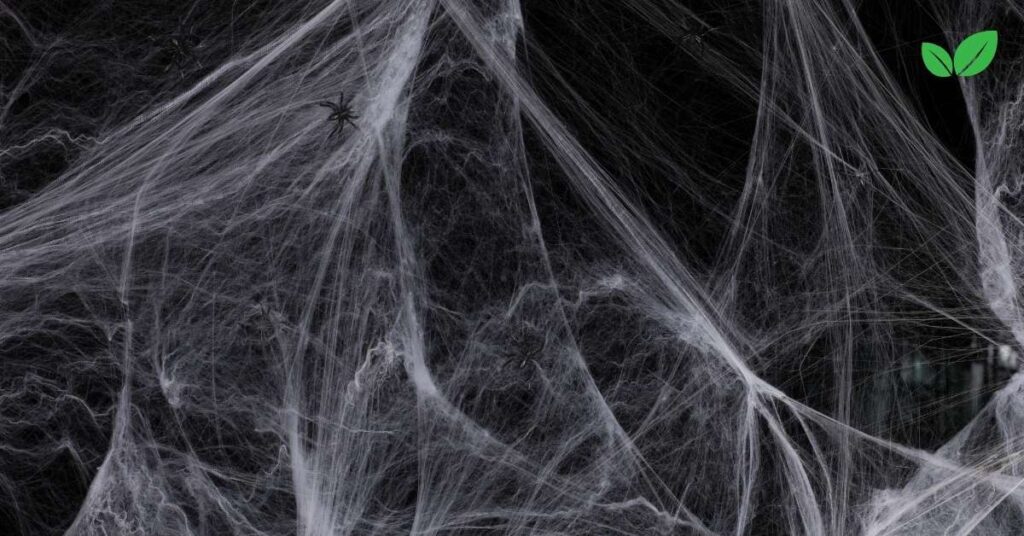
Prey Preferences
Poecilotheria metallica is an opportunistic predator, feeding primarily on a variety of insects and small invertebrates. Its diet may include crickets, grasshoppers, beetles, and other arthropods that inhabit the forest canopy. In captivity, they are typically fed a diet of crickets, cockroaches, and occasionally small vertebrates such as pinkie mice, although such prey is not commonly consumed in the wild.
Hunting Mechanisms
As an ambush predator, P. metallica relies on its keen senses and quick reflexes to capture prey. They often remain motionless in their silk retreats, waiting for vibrations that indicate the presence of nearby prey. Once the prey is within range, the tarantula strikes with lightning speed, using its strong chelicerae (fangs) to inject venom. The venom contains enzymes that immobilize the prey and begin the digestion process by liquefying internal tissues, making it easier for the tarantula to consume.
This highly effective hunting strategy allows P. metallica to thrive even in an environment with variable prey availability. The ability to subdue relatively large or agile prey items ensures that they can maintain energy reserves crucial for their survival and reproductive success.
Reproduction and Life Cycle
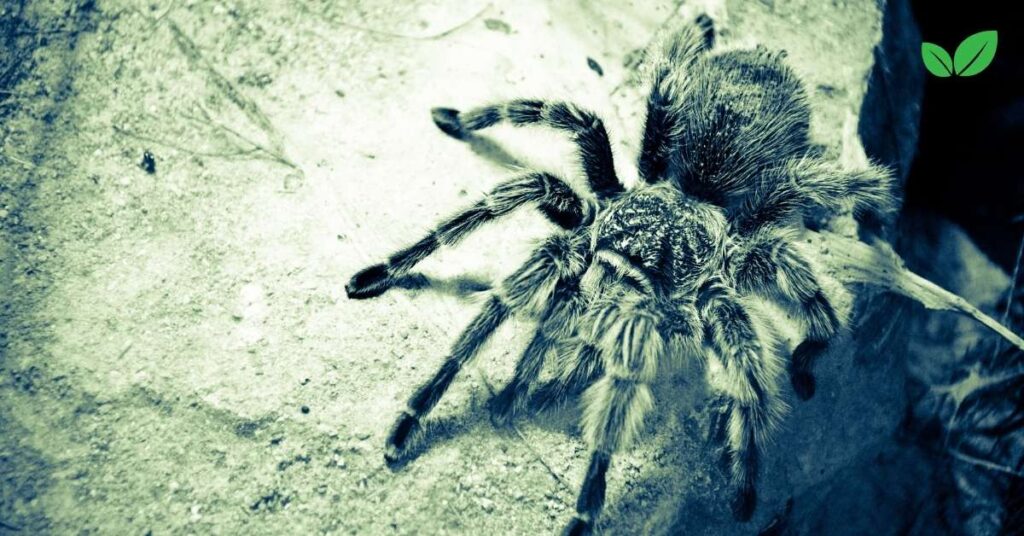
Mating Behavior and Courtship
The mating season for Poecilotheria metallica typically aligns with the region’s wet season when humidity levels are higher. Males reach sexual maturity at around 2 to 3 years of age, while females mature later, at around 3 to 4 years. Males engage in elaborate courtship rituals that include leg tapping and subtle vibrations to signal their presence and intentions to the female.
The female’s response varies based on her readiness to mate; receptive females will allow the male to approach and deposit sperm. However, mating can be risky for the male, as females are known to be aggressive and may attack if the approach is perceived as threatening.
Egg Sac and Offspring Development
After successful mating, the female lays an egg sac that can contain between 50 and 150 eggs. The eggs are incubated within the silk retreat and hatch after approximately 6 to 8 weeks, depending on environmental conditions. The spiderlings remain with the mother for a short period before dispersing to establish their own territories within the forest.
The young tarantulas undergo several molts as they grow, shedding their exoskeletons to accommodate their increasing size. Each molt is a critical phase that renders the tarantula vulnerable to predators and environmental stressors until the new exoskeleton hardens.
Ecological Interactions and Role in the Ecosystem
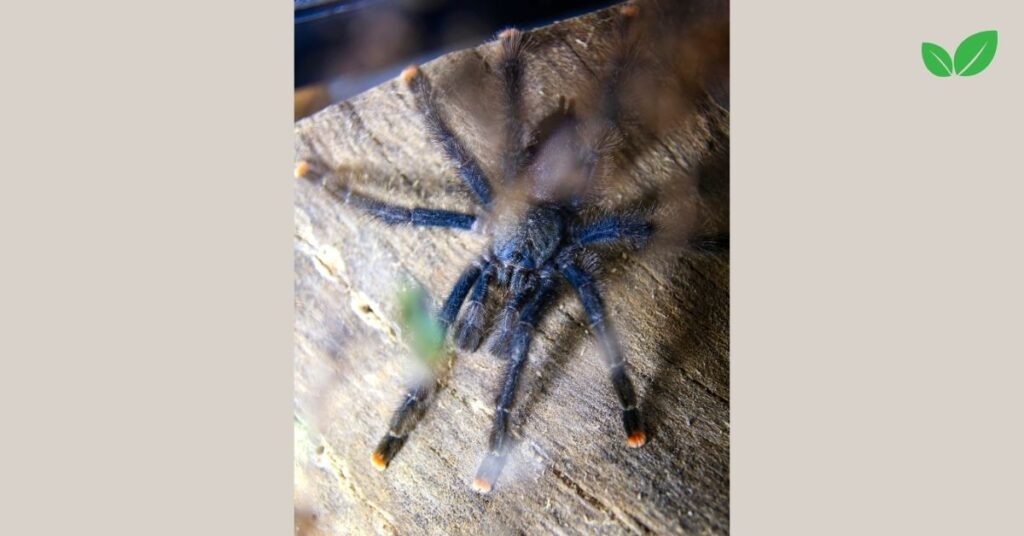
Predators and Threats
In their natural habitat, Poecilotheria metallica faces predation from birds, larger reptiles, and some mammalian species. Their primary defense mechanisms include their speed, venomous bite, and the use of silk retreats as protective hideouts. The camouflage provided by their striking coloration also plays a role in evading predation.
Ecological Role
Poecilotheria metallica contributes to the regulation of insect populations, maintaining a balance within the forest ecosystem. By preying on a variety of arthropods, they help control pest populations, which can impact plant health and the overall functioning of the forest biome. Additionally, as both predator and prey, they are an integral component of the food web, supporting higher trophic levels.
Their silk retreats also provide microhabitats for other small invertebrates, fostering biodiversity within their environment. The decomposition of prey remains within their retreats contributes to nutrient cycling, enriching the soil and promoting plant growth.
Conservation Status and Threats

Endangered Status
Poecilotheria metallica is currently listed as Critically Endangered by the International Union for Conservation of Nature (IUCN). The primary threats to their survival include habitat loss due to deforestation, urbanization, and agricultural expansion. The limited geographic range of this species exacerbates its vulnerability; even minor disruptions to their habitat can have significant impacts on population stability.
Human Activities and Illegal Trade
The exotic pet trade poses an additional threat to P. metallica. Their striking appearance makes them highly desirable among collectors, leading to illegal capture and trade. This practice depletes wild populations and puts further pressure on an already endangered species.
Conservation Efforts
Conservation strategies for Poecilotheria metallica include habitat protection, legal enforcement against illegal pet trade, and captive breeding programs. Protecting forested areas in Andhra Pradesh through the establishment of nature reserves and community-driven conservation initiatives is vital. Additionally, awareness campaigns that educate the public about the ecological importance and endangered status of P. metallica can foster more responsible behavior toward preserving their habitat.
Captive breeding programs, run by zoological institutions and licensed breeders, also play a role in preserving the genetic diversity of the species. These programs aim to reduce pressure on wild populations while maintaining a sustainable population for potential reintroduction efforts.
Conclusion
Poecilotheria metallica is more than just a visually stunning arachnid; it is an essential part of its native ecosystem, contributing to biodiversity and ecological stability. Understanding the environmental niche of this species highlights the importance of its conservation and the need for concerted efforts to protect it from further decline. By safeguarding its habitat and curbing illegal trade, we can ensure that this remarkable tarantula continues to thrive in its natural home and maintains its role within the forest ecosystem for generations to come.
Read More: Chromatopelma Cyaneopubescens: Unraveling the Environmental Niche of the Greenbottle Blue Tarantula

